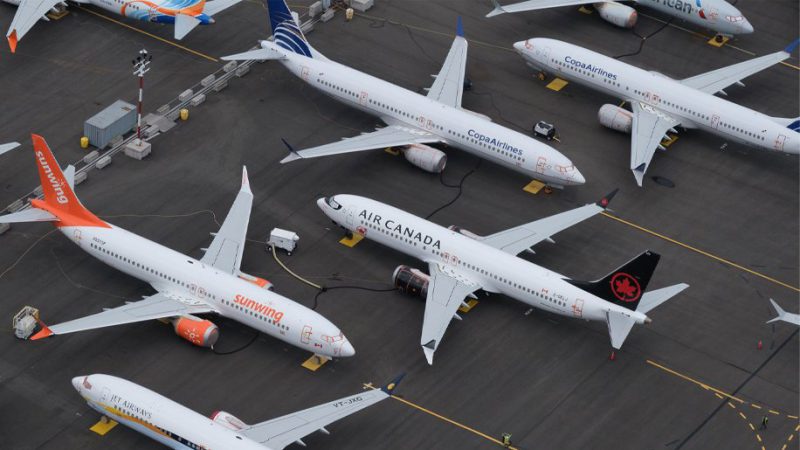FAA Lifts Ban on 737 Max
The jetliner’s 20-month grounding leads to changes in the aircraft’s design, at the Boeing Company and at the FAA
November 18, 2020

The Federal Aviation Administration has given Boeing’s 737 Max aircraft the go-ahead to return to the skies, following a 20-month grounding that stemmed from two deadly crashes in 2019 that killed 346 people.
The order rescinding the FAA’s ban on the aircraft clears the way for Boeing to begin delivering the 450 Max jetliners it has already produced but been unable to hand over to airlines after regulators issued an order that took the plane out of service in March 2019.
The fallout from the mishandling of the two fatal accidents has not only halted operations of the latest design of one of the world’s most popular aircraft, but also brought harsh criticism on both Boeing and the FAA. After an 18-month investigation, the House Transportation and Infrastructure Committee concluded: “Boeing failed in its design and development of the Max, and the FAA failed in its oversight of Boeing and its certification of the aircraft.”
The Congressional investigations have led to the introduction of bipartisan legislation to reform the FAA’s aircraft certification process. The Aircraft Certification Reform and Accountability Act passed the House this week and moves on to the Senate.
As part of the recertification process, in October the head of the FAA Steve Dickson, a former Delta Air Lines pilot, conducted his own test flight of a Boeing 737 Max. After the test flight, Dickson told a news conference, “I completed a number of test profiles today to examine the functionality of the aircraft and I liked what I saw, so it responded well.”
The two accidents were blamed in part on the aircraft’s Maneuvering Characteristics Augmentation System (MCAS). Input from a malfunctioning sensor caused the MCAS flight control system to mistakenly detect a stall, forcing the nose down and leading to a crash.
The Airworthiness Directive issued by the FAA spells out the requirements that must be met before US carriers can resume service, including software enhancements aimed at fixing the MCAS performance, plus other aircraft modifications and more pilot training.
Boeing says the new MCAS software now relies on input from two sensors before activating, preventing the flight control system from repeatedly forcing the nose down. The software is now more responsive to pilot control, and new cockpit display systems have been installed.
Pilots must also undergo simulator training, something which was not required when the aircraft was first certified.
“The FAA’s directive is an important milestone,” said Stan Deal, president and chief executive officer of Boeing Commercial Airplanes in a statement. “We will continue to work with regulators around the world and our customers to return the airplane back into service worldwide.”
“The design and certification of this aircraft included an unprecedented level of collaborative and independent reviews by aviation authorities around the world,” the FAA said in a statement. “Those regulators have indicated that Boeing’s design changes, together with the changes to crew procedures and training enhancements, will give them the confidence to validate the aircraft as safe to fly in their respective countries and regions.”
Following FAA recertification of the aircraft, the European Union Aviation Safety Agency has already indicated it could approve the 737 Max for a return to service not long after the FAA lifts its order grounding the plane.
However passenger consumer groups and families of the victims of the Lion Air and Ethiopian Airlines crashes are critical of the decision to return the Max to service. In a white paper, Flyersrights.org cited the FAA’s lack of transparency and supporting data, flaws in the aircraft design and crew training, and overall criticisms of FAA and Boeing’s safety culture.
In a statement, David Calhoun, chief executive officer of The Boeing Company, said, “We will never forget the lives lost in the two tragic accidents that led to the decision to suspend operations. These events and the lessons we have learned as a result have reshaped our company and further focused our attention on our core values of safety, quality and integrity.”
The Associated Press is reporting that so far, American Airlines is the only US carrier that has the Max back in its schedule, beginning Dec. 29 with one round trip daily between New York and Miami. United says it expects to start using the plane in the first quarter of 2021. Southwest said previously it did not expect to use the plane until at least the second quarter.
boeing.com




